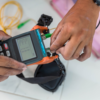
Fiber optic networks are the foundation of modern communication infrastructure. To ensure high performance, safety, and scalability, installations must follow internationally recognized standards. Two of the most important standards in structured cabling are EN50173 (used across Europe) and TIA-568 (widely adopted globally). This article breaks down what each standard covers and why compliance is essential for fiber optic installations.
What is EN50173?
EN50173 is a European standard developed by CENELEC. It defines the design and implementation of structured cabling systems in a wide range of environments, including office spaces, industrial buildings, data centers, and homes.
Key features of EN50173:
- Defines performance and topology for fiber cabling systems
- Specifies connector types (e.g., SC, LC)
- Provides guidance on link lengths, transmission characteristics, and installation environments
- Ensures compatibility with ISO/IEC 11801
In Cyprus and the broader EU, EN50173 is commonly referenced in both public and private sector fiber optic installations.
What is TIA-568?
TIA-568, published by the Telecommunications Industry Association in the United States, outlines best practices for telecommunications cabling. Although originally developed for North America, it is recognized and followed in projects around the world.
Highlights of TIA-568:
- Classifies multimode and single-mode fiber types
- Defines fiber connector standards and color coding
- Sets minimum bend radii and installation tolerances
- Includes testing, documentation, and labeling requirements
TIA-568 aligns with international practices, making it highly relevant for multinational projects and installers working across markets.
Comparison: EN50173 vs. TIA-568
| Feature | EN50173 | TIA-568 |
|---|---|---|
| Origin | Europe (CENELEC) | North America (TIA) |
| Scope | Structured cabling in buildings and industrial sites | Telecommunications cabling |
| Alignment | Compatible with ISO/IEC 11801 | Globally referenced |
| Use in Cyprus | Widely applied | Referenced for international compliance |
Both standards share similar goals and are often complementary in global fiber optic deployments.
Why These Standards Matter
Following EN50173 or TIA-568 ensures that:
- Cabling systems support current and future technologies
- Installations are reliable and consistent
- Projects meet legal and commercial compliance
- Network performance is maximized through proper design
Installers and integrators who follow these standards can reduce troubleshooting time, avoid premature failures, and offer clients better long-term value.
Conclusion
Understanding and applying EN50173 and TIA-568 standards is crucial for professionals working with fiber optic infrastructure. These frameworks provide guidance for reliable, scalable, and future-ready installations. Whether you are working on a commercial building, data center, or home FTTH setup, standards-based design and installation will set your project up for success.



















